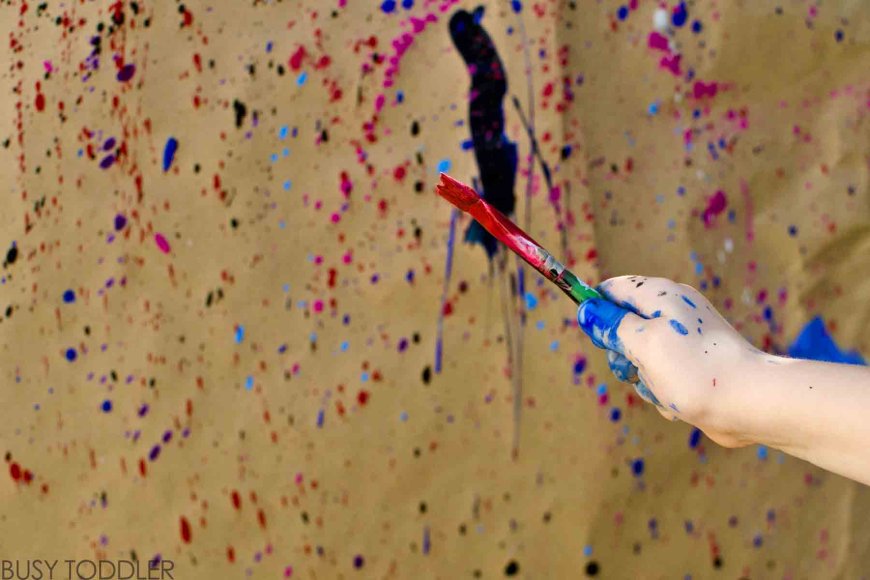Paint splatter is an expressive and vibrant art technique that has captured the imagination of artists and DIY enthusiasts alike. Known for its dynamic patterns and unpredictable beauty, this method offers endless possibilities for adding energy and personality to projects. From fine art to home décor, paint splatter has found its way into diverse applications, allowing creativity to flow without limits.
What Is Paint Splatter?
Paint splatter involves throwing or dripping paint onto a surface, creating random and often abstract patterns. Unlike traditional brush strokes, the splatter technique embraces spontaneity, encouraging artists to let go of perfection and focus on the beauty of chaos.
This approach is most famously associated with abstract expressionism, particularly in the works of artists like Jackson Pollock. Today, it’s widely used in modern art, fashion, and design to add a bold, edgy touch to various creations.
Materials You Need for Paint Splatter
The beauty of paint splatter lies in its simplicity. With just a few basic materials, you can achieve stunning results. Here’s what you’ll need:
- Paint: Acrylic, watercolor, or spray paint works best. Choose a type based on the surface you’re working on.
- Surface: Canvas, paper, wood, walls, or fabric can serve as your base.
- Brushes or Tools: Use old brushes, toothbrushes, or even sticks for different splatter effects.
- Protective Gear: Cover your workspace and wear protective clothing to prevent unwanted messes.
Techniques for Mastering Paint Splatter
The paint splatter technique may look random, but achieving the desired effect requires a bit of planning and experimentation. Below are some popular methods:
1. Brush Flicking
Dip a brush into the paint and flick it toward your surface. The speed and force of your flicks will determine the size and spread of the splatters.
2. Dripping Paint
Hold a brush or stick over your canvas and allow the paint to drip naturally. This creates elongated splatter patterns and works well for creating vertical streaks.
3. Blowing Paint
Use a straw to blow paint droplets across the surface. This method creates organic, flowing patterns that mimic the look of wind-blown splatters.
4. Spray Paint Splatter
Use spray paint for larger surfaces or for achieving a graffiti-inspired look. Hold the can at varying distances for different effects.
5. Layering Colors
For a more dynamic result, let each layer of splatter dry before applying another color. This creates depth and complexity in your artwork.
Applications of Paint Splatter
Paint splatter isn’t confined to canvases; its versatility makes it suitable for numerous creative projects.
1. Fine Art
Many artists incorporate splatter techniques to create abstract masterpieces that are full of energy and emotion.
2. Home Décor
Add character to walls, furniture, or accessories with paint splatter designs. A splatter-painted vase or table can become a focal point in any room.
3. Fashion
Paint splatter has become a popular trend in clothing and footwear. Custom splatter-painted jeans, sneakers, or jackets allow for personal expression.
4. Crafts and DIY Projects
Splatter art can breathe life into handmade cards, notebooks, or gift wrapping. It’s a fun way to make everyday items unique.
5. Event Backdrops
Paint splatter can be used to create vibrant and eye-catching backdrops for events or photoshoots, adding a playful or edgy vibe.
Tips for a Successful Paint Splatter Project
- Experiment First: Practice on a scrap piece before working on your final surface.
- Control the Mess: Use drop cloths or newspaper to protect your workspace and surroundings.
- Mix Paint Consistencies: Thicker paints produce larger splatters, while diluted paints create finer droplets.
- Use a Color Palette: Choose a cohesive set of colors to avoid overwhelming your composition.
- Have Fun: Embrace the unpredictability of paint splatter and let your creativity shine.
The Emotional Connection of Paint Splatter
There’s something deeply satisfying about the randomness of paint splatter. It allows artists to release tension, break free from structured techniques, and create something truly unique. This free-flowing approach often reflects emotions, capturing a moment of spontaneity that resonates with viewers.
Whether you’re creating a bold statement piece or adding playful accents to your home, paint splatter is a fantastic way to express yourself.
Conclusion
Paint splatter is more than just an art technique; it’s a celebration of creativity and individuality. From its roots in abstract expressionism to its modern-day applications in art and design, this dynamic method continues to inspire artists of all levels.
If you’re ready to explore the world of paint splatter, gather your materials, protect your workspace, and let your imagination take over. Share your experiences or ideas in the comments below—we’d love to hear about your creative journey!















